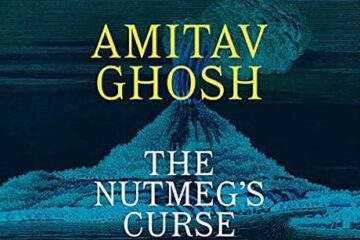Hanna Burr | Book Review of Bathsheba Demuth’s Floating Coast: An Environmental
History of the Bering Strait (W.W. Norton & Company, 2019).
◊ ◊ ◊
Bathsheba Demuth’s revolutionary book The Floating Coast surveys a century and a half of interactions between the indigenous tribes of Beringia, the animals and plants that inhabit the Bering Strait, and the interventions of capitalism and socialism in the ecological and social networks of the coastal region of the Arctic between Alaska and Russia. The work is a genre-defining mixture of historical and ethnographic research, a personal essay that draws on Demuth’s years spent living in the Arctic Circle, and a parable for ongoing and future climate change.
Demuth, the Dean’s Associate Professor of History and Environment and Society at Brown University, had taken off for Beringia when she was eighteen to learn dogsledding and survival skills, or, in her words, “how not to die” in the tundra. While apprenticing with a Gwitchin musher, she experienced firsthand the limits of human technology in the face of extreme temperatures, wild animals, and finite resources. She gained a deep respect for the interdependence of the various actors that inhabit the Arctic, of which humans are only one.
Drawing on this vast well of unique memories and later ethnographic forays on both sides of the Strait, Demuth immerses the reader in the landscape. We can see the blue of the sea ice and the crimson blood from whale births, feel the walrus blubber on Demuth’s hands as she carves its body, and hear twigs snapping under bear claws. These sensory details remind the reader on a visceral level of the daily struggle of survival in the Arctic while strengthening one of the main arguments of Demuth’s book: for every act of consumption, something else must perish (333).
Demuth illustrates this underappreciated truism by tracking humans’ pursuit of energy in Beringia on the American and Russian sides of the Strait. She begins in 1848 when American whalers entered Beringian waters searching for whales and their oil-giving blubber and ends in the 1990s with the end of industrial whale-hunting. In between, Demuth explores whale migration patterns, foxhunting, American gold mines, U.S.S.R. infrastructure development projects, and much more. She also highlights the differing relationships to capitalism and socialism as experienced by the Yupik, Chukchi, and Inupiat nations.
The book is separated into five parts: Sea (1848–1900), Shore (1870–1960), Land (1880–1970), Underground (1900–1980), and Ocean (1920–1990). With every dive into a specific ecological and economic dynamic between animals and humans and the ideologies that drive them, the lesson Demuth draws out is that energy is finite. To forget this lesson is to incur permanent death, rather than the cyclical, life-giving death inherent in subsistence living. Demuth argues that with every historical attempt to impose a human ideal of order on Beringian, the result was a break from the sustainable energy conversion cycle. This break led to various challenges, including the decimation of animal populations, the starvation of indigenous peoples, and the degradation of the land to a degree that made continued resource extraction untenable.
Despite its place-specific applications, this lesson about finite resources (or rather, the failure to learn this lesson) is fundamental to understanding the root causes of climate change. Demuth critiques neither individual acts of killing nor consumption, but rather the transformation of the consumed into commodities. This commodification allows consumers to forget about the death that is fundamental to their ability to survive, thereby promoting overconsumption. According to Demuth, this is why capitalism is an inherently adolescent way of interacting with the world; it is based on a false belief in infinite resources and the consumer’s immortality (334). But however much capitalism tries to convince us otherwise, energy always has a cost, and “like earlier transformations brought by foreigners [to Beringia], climate change is the unintended result of energy acquisitiveness, albeit for oil and coal rather than whales and reindeer (19).”
Demuth’s book epitomizes a growing awareness that to tackle climate change, we must not only shift to renewable energy, but also fundamentally reimagine our relationship with the very act of consumption. We must remember that death is fundamental to life and accept the moral and ethical dimensions of living.
One critique of Demuth’s book might be its wide-ranging scope. She does not argue for the importance of any single historical incident or a particular course of action. Instead, her book articulates a decentered vision of the Beringian landscape. But this is also the book’s strength. Demuth offers us a unique lens through which to see a place, people, and history, and her way of seeing these entities is sorely needed and will continue to grow in importance.
Because of its relatively simple language and beautiful descriptions, this book is not only perfect for academics of environmental history but also for graduates, undergraduates, and the average history buff. Everyone should read Floating Coast and learn from this master at work.
Hanna Burr is a graduate of the MFA Program in Creative Writing and Environment at Iowa State University and the former visual arts editor of Flyway: Journal of Writing & Environment.




